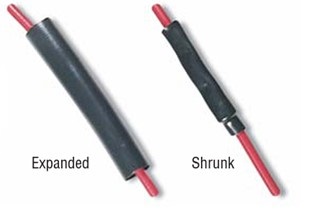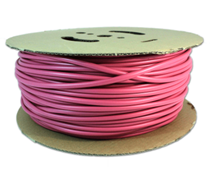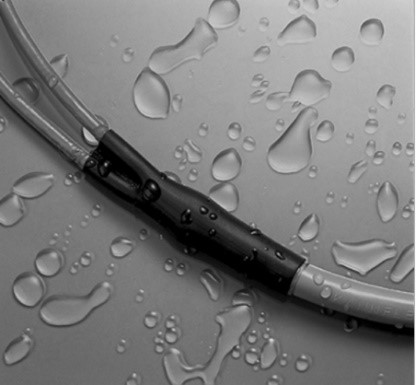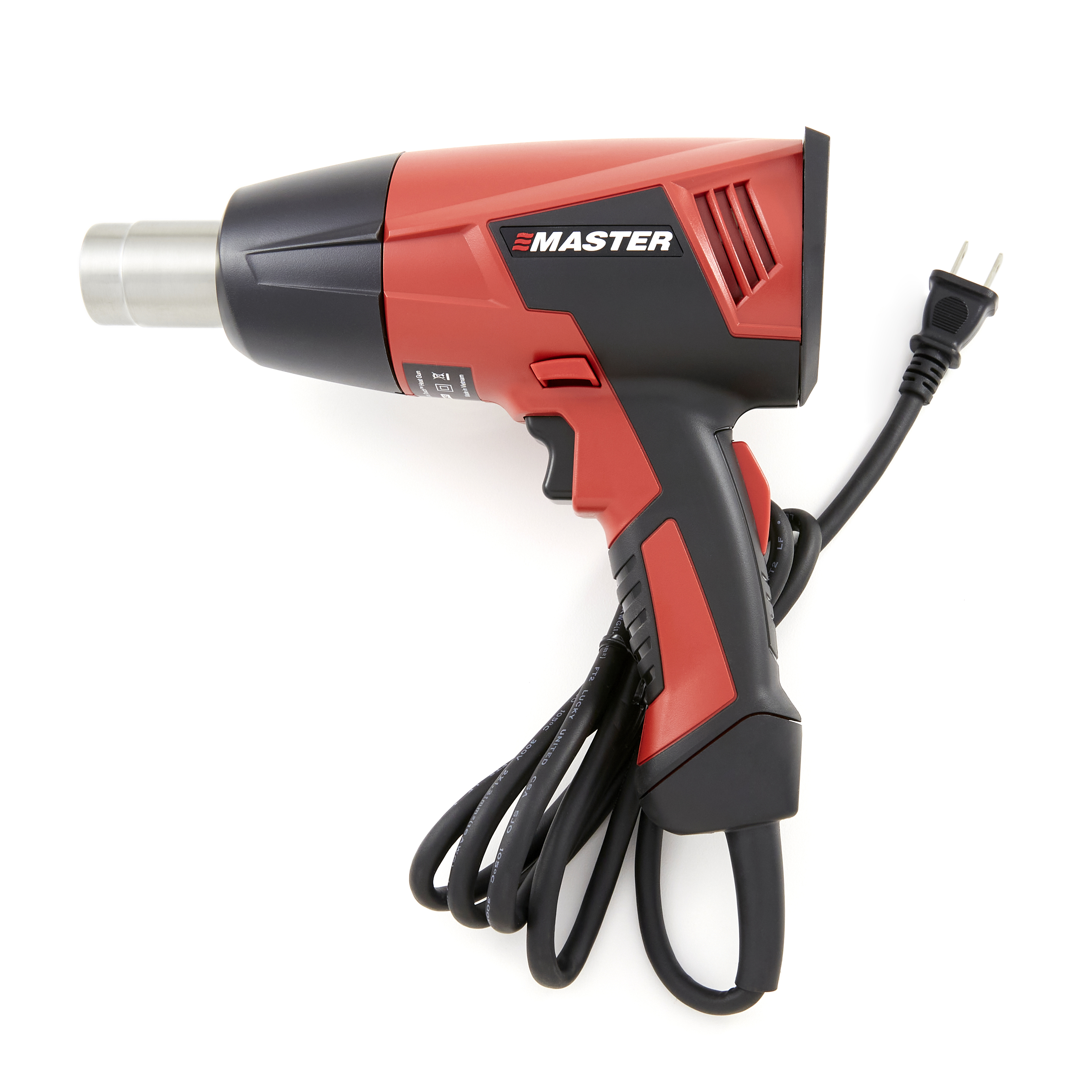Heat Shrink 101
Using heat shrink materials is an excellent way to protect crucial electrical connections and keep wire connections secure. However, some confusion lingers over heat shrink materials and how they are best used. Here's what you need to know.
What Is Heat Shrink Protection?
At its most basic, heat shrink tubing, also known as heat shrink, is a material for insulating wires and  cables. Before an automotive wire is connected, a heat shrink sleeve is fitted over the wire. Once the wiring is complete, the sleeve is moved over the connection. The sleeve is then exposed to hot gas via an oven, a heat gun, or some other technique that applies heat, and it shrinks around the connection, providing tight insulation.
cables. Before an automotive wire is connected, a heat shrink sleeve is fitted over the wire. Once the wiring is complete, the sleeve is moved over the connection. The sleeve is then exposed to hot gas via an oven, a heat gun, or some other technique that applies heat, and it shrinks around the connection, providing tight insulation.
Heat shrink tubing is generally made of nylon or polyolefin such as propylene or similar polymers because these materials shrink radially, not longitudinally. In other words, the tube’s diameter becomes much smaller, and its length slightly shorter, as you heat it. Heat shrink is available in a variety of colors, allowing you to maintain any color designations on wires as needed.
Common Uses for Heat Shrink
The most common use of heat shrink is to secure wiring connections against abrasion and other damage and provide insulation where it can be difficult to use insulated wires otherwise. But it has a multitude of other uses. In addition to strain relief, it can be used to replace worn insulation on wiring almost anywhere in a vehicle, to bundle together multiple wires to keep them from hanging down or being too loose, to protect small parts from abrasion, and even to create cable entry seals for environmental protection.
Types of Heat Shrink
There are two types of heat shrink tubing: thin (or single wall) and dual (or double wall). The main factor for choosing between them is whether your application needs to have high protection against moisture.
Single Wall shrink tubing provides superior insulation, strain relief, and protection against mechanical damage and abrasion. It provides reliable, consistent dimensions and physical properties.

Dual Wall shrink tubing is best used when corrosion protection and sealing are required. An additional adhesive liner within the tubing provides an added seal against intrusion - a moisture-resistant protective barrier using a controlled amount of adhesive for consistent results.
Right: An example of polyolefin dual wall heat shrink manufactured by DSG-Canusa, available in red or black. An internal meltable sealant physically encapsulates connections.
Shrink Ratio, Diameter and Length
Shrink ratio is another key consideration. Heat shrink ratios compare the original heat shrink tubing in relation to its shrunken, final form. Ranging from 2:1 through 4:1 ratios, heat shrink will reduce to 50%-25% of its original size, respectively, once heat is applied.
It’s important to choose the right shrinkable tubing size. To calculate it, simply measure the diameters of the smallest and largest parts you will be covering with the tubing, then select heat-shrinkable tubing that is twenty to thirty percent larger than your largest measurement.
Consider the length of the shrink tubing as well. When heated, the length of the tube will shrink by 5 to 7 percent, so make sure to choose a tube that is a bit longer than the application area you need to cover. A long roll of tubing can often be cut to a specified length for a desired application.
If you are using dual-wall, adhesive-lined tubing, wear gloves when heat shrinking it, as some of the hot adhesive may seep out from the edges before it dries.
3M offers a variety of single and dual-wall heat shrink materials. Shown at right: 3M EPS-300 adhesive-lined heat shrink tubing, which creates a tight seal against moisture.
Industry Certifications
If your project is required to meet certain industry certification standards, be sure your heat shrink material complies by referring to its product specifications. Common approvals held by shrink tubing include CSA Mark (US, C and US, NRTL/C), UL Listing Mark, and UL Recognized Component Mark (US and Canadian).
Material Types
Another thing to keep in mind is what protective properties are needed. Depending on what material the shrink tubing is made of, it can offer a wide range of chemical resistance and physical protection from cuts and abrasion.
- Polyvinyl Chloride (PVC) is a widely used material that had good flexibility, smooth surface properties, and nontoxic qualities.
- Polyolefin is a resin that exhibits resistance to chemicals and suitability for a wide range of applications, including marine. It offers superb protection against the elements including UV protection.
The type of material and specific chemical makeup should be selected based upon the application to ensure there is no dangerous reaction or failure due to the environment. Please consult the product’s data sheet for these properties, so you can match them up with your application’s requirements.
Temperature Requirements
When selecting heat shrink, there are two temperature ratings to consider:
- Shrink temperature, which is the temperature at which the crosslinked structure of the tubing will begin to relax and shrink into its recovered size. The lower this temperature, the easier it is to make the tubing shrink, and the less chance of damaging wires or materials during the heat shrink process.
- Operating temperature, which is the range that the tubing can operate within (i.e. after it has been shrunk) while maintaining its flexibility and other general protective properties.
What Heat Source Should I Use?
The best heat sources will be ones that offer consistent, dry heat, such as a heat gun, or by placing the wire and connection in an oven if possible. Avoid using open flame sources. Open flames and other focused heat sources have the potential to melt the tubing, unevenly shrink it, over-shrink it, or cause other damage, some of which may not be obvious until the connection is put to heavy use.
How Can I Ensure a Good Seal?
First, strip away any worn insulation or other material from the wire to ensure the best possible seal. If you need to shift the sleeve over a connection and it's a tight fit, use a silicon-based lubricant to move the sheath. Anything else may corrode the wire or damage the sleeve. Heat the sleeve consistently and with a broad-based heat source so that it shrinks evenly, and keep a careful eye on the shrinking so that you don't over-shrink the material or otherwise damage it.
Heat shrink protection is a handy and simple technique that any member of your team can use to make quick and effective repairs. It's always a good idea to have some available, and you'll want to make the right choice for your application. See the options at Waytek’s heat shrink products page.
Subscribe Now
Subscribe and be the first to know when new articles are published.

